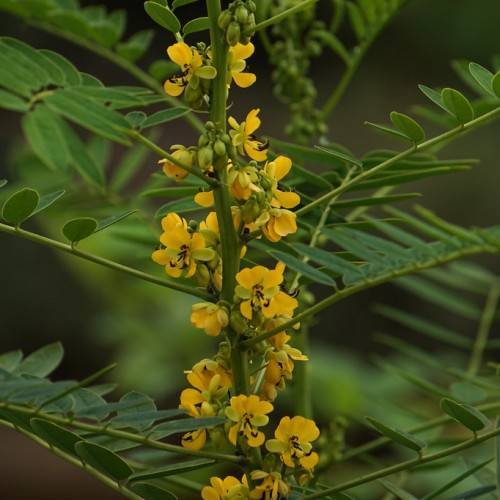
wild senna
Senna marilandica
Cycle:
Herbaceous Perennial
Watering:
Average
Hardiness Zone:
4 - 9
Flowers:
Flowers
Sun:
Full sun
Fruits:
Fruits Ready In Fall
Leaf:
Yes
Growth Rate:
Low
Maintenance:
Low
Poisonous To Humans:
Yes
Poisonous To Pets:
Yes
Drought Tolerant:
Yes
Salt Tolerant:
Yes
Thorny:
Yes
Invasive:
Yes
Care Level:
Medium
watering
Wild senna should be watered once a week. The best way to water is to soak the soil with 1 inch of water; this should be done at the root base, not overhead. During periods of extreme heat or drought, water more frequently; every 3-4 days is ideal. During even the hottest days, try to avoid overhead watering. In order to avoid overwatering, wait until the top inch of soil has dried before watering again.
sunlight
Wild senna (Senna marilandica) grows best when provided with full sun, or at least 6 to 8 hours of direct sunlight each day. While they can tolerate some shade, this species of plant will not reach its full potential if not provided with adequate sunlight. The intensity of the sunlight is also important; in high-altitude areas, full sunlight may not be strong enough to support full growth of these plants. Additionally, the sunlight should be provided in the warmer months of the year; wild senna performs poorly in cold climates and can be damaged by frost or extended periods of low temperatures.
pruning
Wild senna (Senna marilandica) should be pruned in the late winter or early spring before any new growth appears. Pruning should be minimal, with only dead, diseased or damaged stems removed. Cutting back healthy stems should only be done if necessary to maintain the desired shape or size of the plant. It is also important to never prune more than 1-third of the foliage at any 1 time to avoid stressing the plant.
